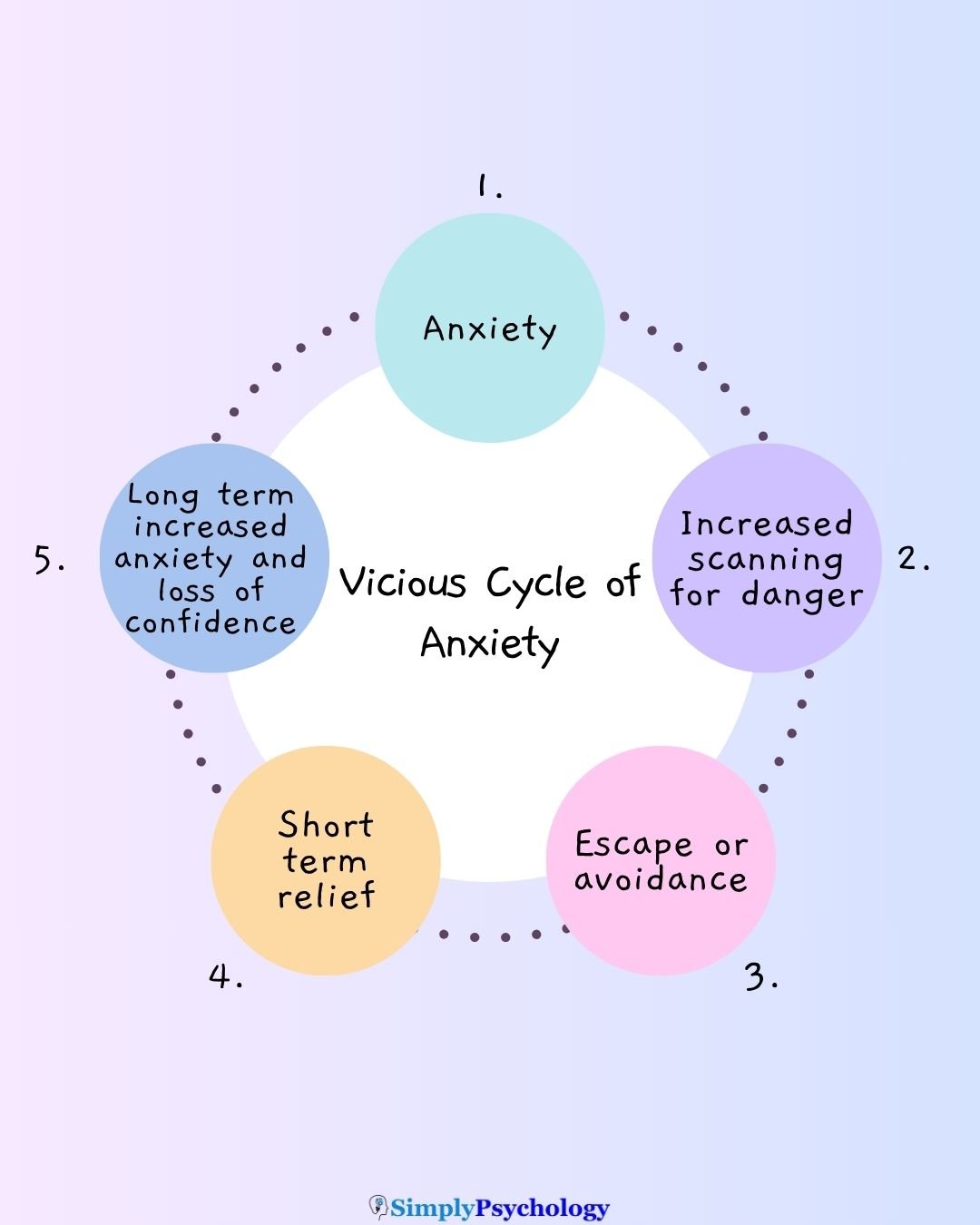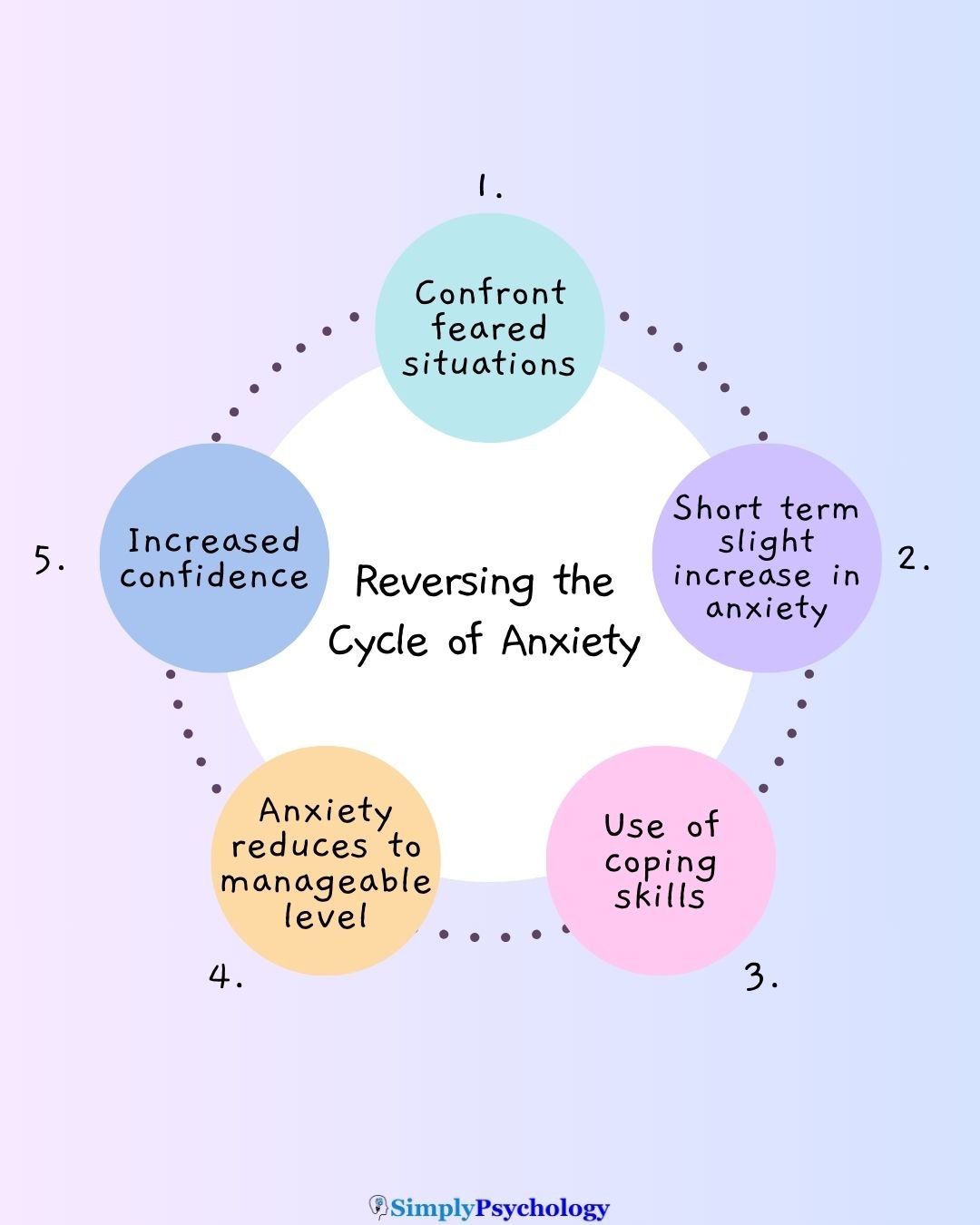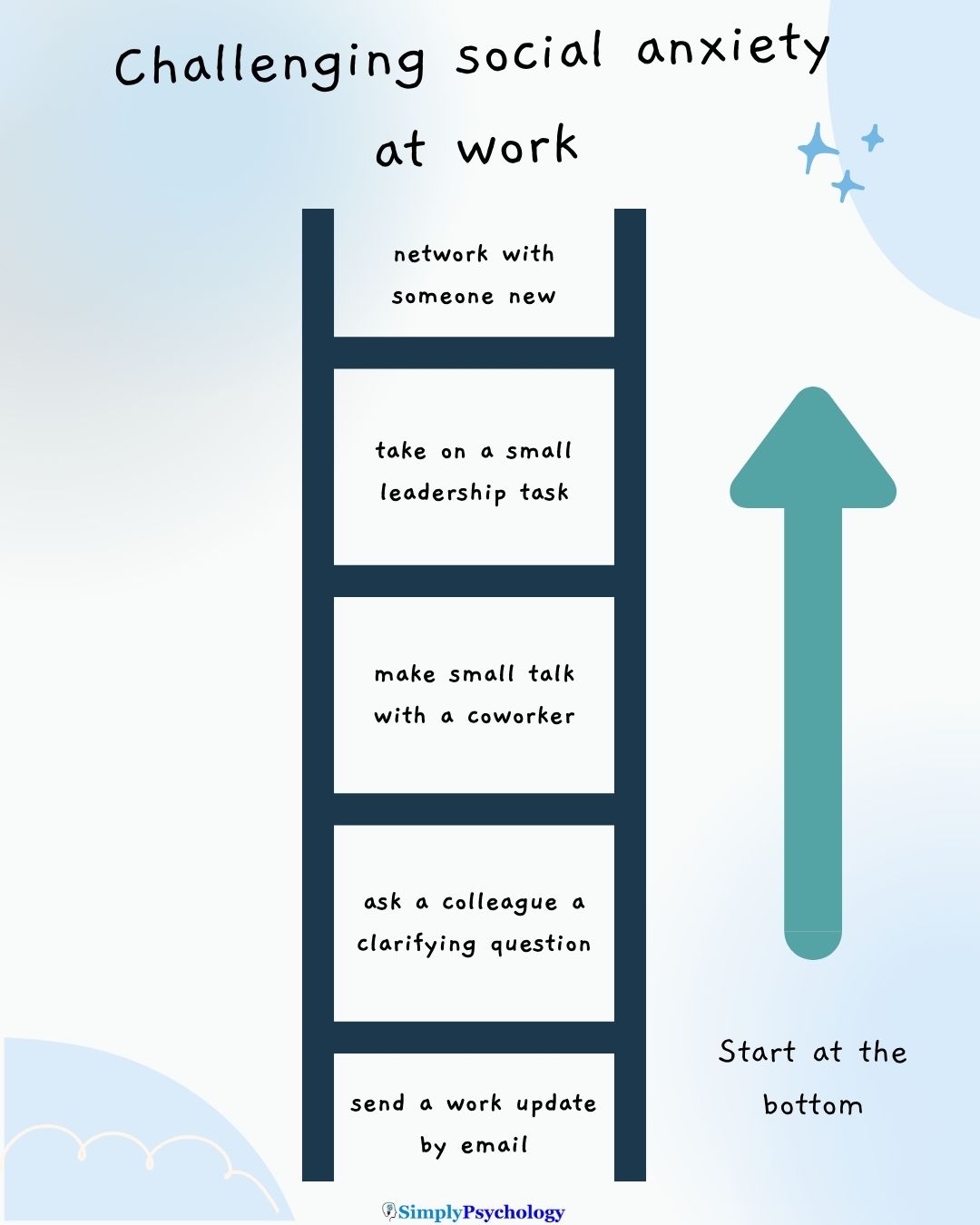Those who struggle with social anxiety often fear social interaction, being judged, and being negatively criticized by others.
When it comes to jobs, anything from searching for jobs, the interview process, and the job role itself can prove challenging for those with social anxiety.
There’s no perfectly safe job that eliminates all social contact—and trying to chase that fantasy can trap you in avoidance, which often worsens anxiety over time.
Instead, with smart strategies and gradual steps, you can find or shape roles that both support your mental health and allow for growth.
You don’t have to settle for just low-stress or low-interaction work. What often matters more is pursuing work you care about, while developing coping skills to handle the social aspects.
With courage, resilience, and small incremental exposure, you can thrive in a role that challenges you without overwhelming you.

How Social Anxiety Affects Work
In the workplace setting, social anxiety often manifests as a deep fear of judgment or criticism, real or imagined.
You may worry that co-workers or supervisors are scrutinising your every word, waiting to pounce on mistakes, or questioning your competence.
This constant mental self-monitoring can drain energy and increase stress, making even routine tasks harder.
One person with social anxiety reflects on how social anxiety can hinder career progression:
“It obviously has a massive effect on how quickly you can advance in your career. Getting promotions and positive feedback … is 98% socializing well.”
Across the career path, social anxiety creates distinct challenges:
- Job search: You may overanalyze every job posting, avoiding roles that sound “too social,” second-guess whether you’re qualified, or skip networking opportunities altogether.
- Interviews: Interview settings feel high stakes. People frequently report their minds going blank, experiencing physical symptoms (e.g. sweating, trembling, rapid heartbeat), and sometimes canceling interviews to avoid the anxiety.
- On the job: Once in a role, the anxiety may continue. You might fear making mistakes or being judged, hesitate to ask for help, avoid speaking up in meetings, or decline promotions simply because of the added social demands.
“I currently work as an executive assistant, and I have been unhappy … I hate that social part of my job. … I like working on my own with a lot of head-down work time. I dread meetings … I would be so much happier if I only had to attend one meeting a day.”
The Avoidance Trap
When someone with social anxiety leans too heavily into low-contact or isolated jobs, it can reinforce avoidance behaviors.
Over time, this reinforces the belief that social situations are dangerous, shrinks one’s comfort zone, and reduces opportunities to practise handling social demands. In essence, staying “safe” can keep you stuck.

Progress Through Small Challenges
A healthier route is gradual exposure: taking on micro-challenges that push your boundaries just a little, consistently.
For example, volunteering to give a short update in a small meeting, asking a coworker a clarifying question, or initiating a brief check-in.
Over time, those small wins accumulate into greater social confidence and resilience in your work role.

Choosing a Job That Fits You
When you’re managing social anxiety, it’s tempting to search only for jobs that seem “safe” — ones with minimal interaction, limited teamwork, or isolated settings.
But choosing solely on that basis risks putting yourself in a role that doesn’t engage or fulfil you.
A better approach is balance: aim for roles that align with your strengths, interests, and values, while also being manageable in terms of social demand.
Even the quietest position will involve some social interaction — a weekly meeting, a check-in with a colleague, or responding to feedback.
Rather than rejecting a job for one small social obligation, ask: Can I manage that part if I build coping skills? A realistic mindset helps avoid over-narrowing your options.
Focus on Strengths
Lean into what you naturally do well — creativity, analysis, writing, attention to detail, empathy, problem-solving.
Rather than trying to “act extroverted,” let your authentic strengths guide you. For instance, someone who’s good at structuring information might enjoy technical writing or data work, even though it involves occasional collaboration.
“I realized applying for roles that match my passion in writing has helped me get through interactions I dreaded.”
Passion vs. Anxiety
If you’re always choosing a job mainly to avoid discomfort, you may end up feeling stuck, unmotivated, or unfulfilled.
Pursuing work that genuinely excites you gives you purpose and fuel to confront challenges as they come.
Anxiety is not a signal to retreat entirely — it can be a guide to pick roles where social demands are tolerable, not absent. Over time, you can stretch your comfort zone in ways that feel meaningful.
Low-Contact Jobs That May Suit Social Anxiety
Below is a curated list of roles that tend to have lower social demands or more controllable interactions. These are potential fits, not guarantees — each still involves some social component (e.g., occasional meetings, clients, feedback).
Creative and Independent Roles
- Writer / Copywriter / Editor
Much of the work is solitary: drafting, revising, researching. Communication is often via email, document comments, or asynchronous feedback.
Social demand: occasional client check-ins, peer review, revisions. - Graphic Designer / Illustrator
The design work is individual, and many client interactions can be handled via brief emails or shared mockups.
Social demand: presenting designs, feedback sessions, collaboration. - Artist / Illustrator / Digital Artist
Especially for commissioned art, you can schedule client interactions and retain creative freedom.
Social demand: discussing briefs or revisions, minimal live communication.
Technical and Detail-Focused Roles
- Programmer / Software Developer
Many tasks are done independently, especially when remote. You “code in peace.”
Social demand: occasional stand-ups, code reviews, bug triage meetings. - Data Analyst / Data Scientist
Working with datasets, generating reports, running analyses is often behind the scenes.
Social demand: presenting findings, collaborating with stakeholders. - Accountant / Bookkeeper
A structured environment, focus on numbers and precision, less ambiguity.
Social demand: client meetings, financial reviews, audits. - Archivist / Librarian / Records Manager
Organizing, preserving, cataloguing — roles that require concentration and methodical work.
Social demand: occasional researcher queries, supervising small staff.
Outdoor or Animal-Focused Roles
- Gardener / Landscaper / Groundskeeper
Much of the work is solo, outdoors, with natural rhythms.
Social demand: coordinating with homeowners or team leads. - Animal Care / Pet Trainer / Kennel Worker
Many people with social anxiety say animals feel easier to interact with.
Social demand: some client contact, vet or owner communications, team tasks. - Zookeeper / Wildlife Technician
Working behind the scenes with animals, habitat care, research.
Social demand: briefing staff, occasional public or educational duties.
Some socially anxious people thrive in helping / leadership / therapeutic roles precisely because their empathy, listening, and sensitivity are strengths. Roles like counsellor, coach, or mentor may require a lot of social interaction, but the interactions are purposeful, structured, and meaningful.

Coping Strategies for Any Job
No matter which role you’re in, you can develop skills and practices that help you manage anxiety, protect your well-being, and gradually expand your comfort zone. Below are three core domains to focus on.
Managing Workplace Anxiety
- Grounding & breathing techniques: Use methods like the 5-4-3-2-1 approach (naming 5 things you see, 4 you feel, 3 you hear, 2 you smell, 1 you taste) to pull your mind back to the moment.
- Slow, controlled breathing: Practices such as diaphragmatic breathing, box breathing, or extended exhale breathing can shift your body toward relaxation.
- Recovery breaks & pacing: Build in micro-breaks (e.g., step outside, stretch, walk) when anxiety feels intense. Don’t force yourself to power through constantly.
- Self-compassion over perfection: Remind yourself that mistakes are part of growth. In interviews or job tasks, treat yourself with kindness if things aren’t flawless.
Navigating Social Interactions
- Prep scripts & “safety lines”: Have a few ready phrases for small talk or clarifications (e.g., “Could you clarify what you mean by that?”)
- Meeting prep & boundaries: Before meetings, rehearse what you’ll say, structure questions, and propose agendas to reduce uncertainty (but don’t rely on rehearsing too much!).
- Ask early, don’t wait: If you’re stuck or unclear, ask sooner rather than later. It reduces the stress of carrying uncertainty.
- Leverage asynchronous communication: Where possible, push for email or chat rather than impromptu calls or in-person demands.
Seeking Support and Accommodations
- Therapy/mentorship / coaching: Cognitive behavioral therapy (CBT), exposure therapy, or working with a coach or mentor can help you gradually reframe anxious thoughts and build resilience.
- Workplace adjustments: Some commonly recommended accommodations include:
• Flexible hours or hybrid schedule
• Quiet workspace or noise-cancelling headphones
• Email communication instead of calls or drop-in chats
• Clear structured expectations (written agendas, task checklists) - Open dialogue (if safe/appropriate): If you feel comfortable, talk with a manager or HR about what support would help. Frame it in terms of productivity and clarity, not weakness.
Building Confidence and Career Growth
Think of work roles as rungs on an exposure ladder: you start with lower social demands and gradually step up as your tolerance and confidence grow.
For example, many people begin in remote roles, then transition to hybrid work, and (if they feel ready) eventually take on in-person positions.
Similarly, someone might move from a back-office support role to occasional client contact, then to full client-facing tasks over time.
This ladder approach gives you room to expand, without forcing a jump you’re not ready for. It mirrors exposure therapy principles: you gradually face your fears in manageable doses, rather than diving into the deepest end all at once.

It’s also worth noting that extroverted socially anxious people often differ from introverted socially anxious ones in how they approach growth.
An extroverted person may seek repeated social exposure (e.g., volunteering to present), while an introverted person might prefer building confidence behind the scenes first (e.g,. writing, asynchronous tasks).
Neither path is better — the difference is in how you pace it.
Redefining Success
Success doesn’t mean zero anxiety or never feeling uncomfortable. True success is doing meaningful work while keeping your anxiety manageable.
Over time, with support, many people with social anxiety reach promotions, leadership roles, or positions with more social demand — not by skipping the ladder, but by climbing it gradually.
Your goal should be sustained growth, not perfection. Ambition can coexist with anxiety — the key is knowing when to lean into progress and when to step back and replenish.
Further Information
National Alliance on Mental Illness (NAMI): Working With an Anxiety Disorder: A Guide for Employees
References
Bank, S., Burgess, M., Sng, A., Summers, M., Campbell, B., & McEvoy, P. (2020). Stepping Out of Social Anxiety. Perth, Western Australia: Centre for Clinical Interventions
Substance Abuse and Mental Health Services Administration. (2016). DSM-5 Changes: Implications for Child Serious Emotional Disturbance [Internet].
Pelissolo A, Abou Kassm S, Delhay L. Therapeutic strategies for social anxiety disorder: Where are we now? Expert Review of Neurotherapeutics. 2019;19(12). doi:10.1080/14737175.2019.1666713

